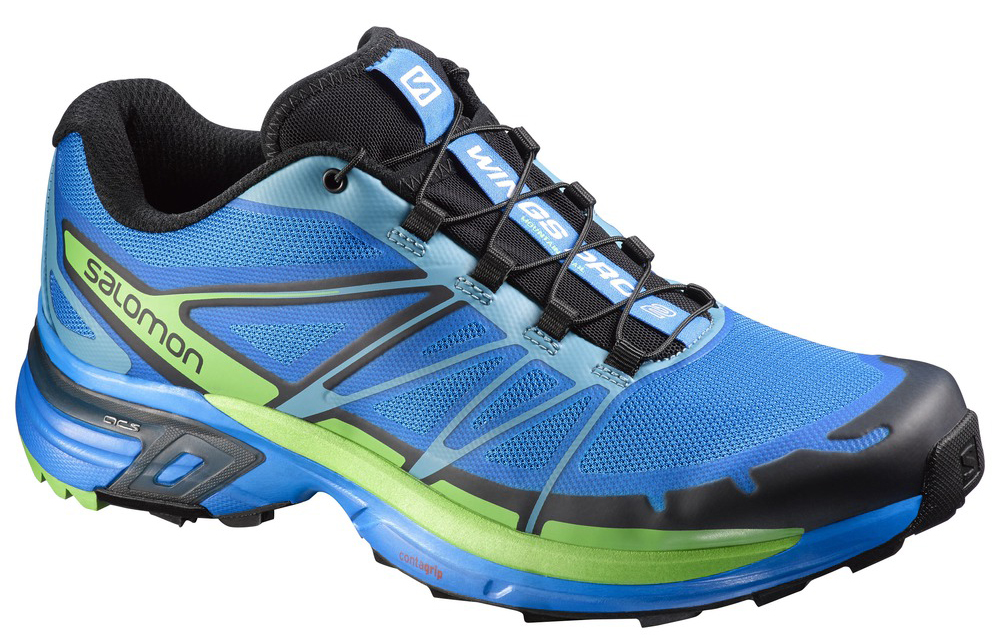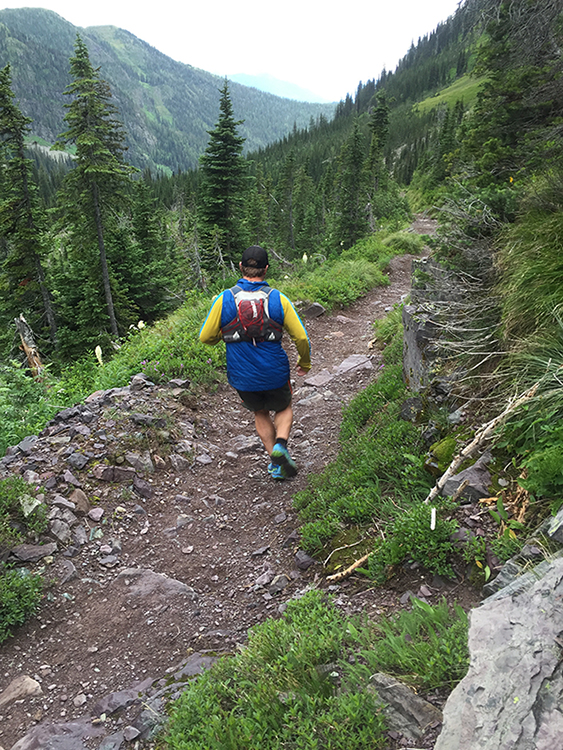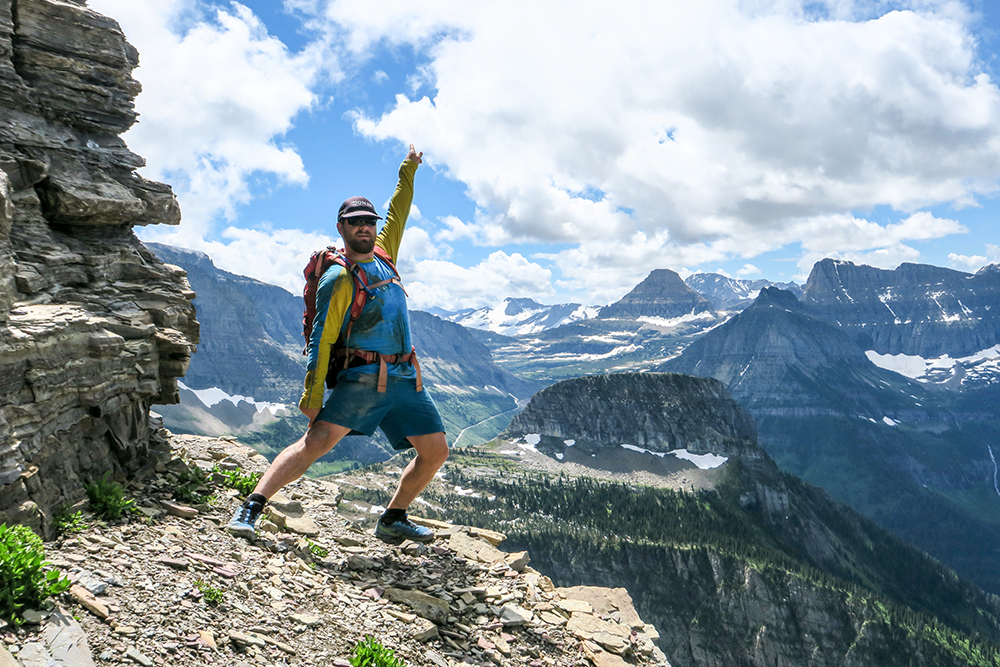
Salomon Wings Pro 2 Running Shoe
Stated Weight: 335 g
Size Tested: 9
Midsole elevations: 27 mm/17 mm (10 mm drop)
MSRP: $140
Locations Tested: Locations: Glacier National Park, Waterton Lakes National Park, Big Sky, Stone Hill, Blodgett Canyon, Mission Mountains Wilderness, MT
Days Tested 22 days, 234 miles, 65,900 ft of vertical gain.
Intro
There’s no question that the places we play and the demands of that terrain shape the specific needs for the gear in our lives. I grew up and currently live in the shadow of Glacier National Park in Northwest Montana, which could be succinctly described as a highly scenic collection of 8000-10,000ft choss piles under the cover of snow for at least half of the year. Long approaches are the standard in winter, and shorten somewhat in the summer. Ten to twenty mile days of trail and scree wandering lead to frequent snow travel. Broken cliffs mean 4th and 5th class climbing near the summits. All this means that finding the right things to put on your feet is not a simple task.
Over the past eight years or so, I’ve tried a bunch of different footwear to accommodate the things we do here. Low end mountaineering boots, mid-height approach shoes, proper backpacking boots. None of those categories do well on the long approaches, which I’ve come to regard as the proper crux of most of the walking/climbing/wandering I do. Thus, I’ve settled in running shoe land. For me, a proper Glacier runner needs the following qualities:
1. It needs to fit my hobbit feet (wide-ish, higher instep, big heel)
2. Good ventilation (approaches) balanced by some level of water repellency (snow and mud)
3. A moderate amount of cushioning
4. Soles that grip well on dirt, scree, and bare rock.
5. Enough stiffness and edging ability to dig in on hard dirt and support low 5th climbing.
I tried on some shoes during a Salomon demo event at the 2015 Rut Mountain Runs, and the Wings Pro 2 seemed both to fit my foot and the bill I outlined above so I spent last summer running, scrambling, and climbing in them.
Features
Salomon positions the Wings Pro 2 as a firmer/rockier ground, more downhill-oriented shoe within their trail running line. To those ends they added a layer in the midsole to avoid rock-punching your metatarsals and a bit more cushioning than Salomon’s Sense series along with “downhill-oriented lug geometry” that bites into trails on the down.

Kevlar laces and plastic brackets provide a durable, uniform lace system that tucks away and doesn’t come undone while thrashing through underbrush. The lower outside of the shoe is protected by a mudguard, while TPU toe cap keeps your tootsies less stubbed than they might be. The uppers are made of a stretch mesh that breathes impressively well.
Fit
Salomon is known for having a slightly wider fit to their footwear, and the Wings Pro 2 do well by my feet in that regard. I usually wear a size 9 shoe, and the size 9 Wings Pro 2 fit me well.
I never had any issues with blisters while using either medium cushion or thin socks, which tells me that the fit was spot on. For the sake of comparison, my feet do well in Salomons, as well as some of Scarpa’s footwear (Tech Ascent, Maestrale RS, Freedom RS) and the 2015-16 Dynafit TLT6.
There’s a very snug yet unrestrictive feel to Salomon’s Endofit that allows me to run my laces looser than I would expect to yield a secure feel. However, the plastic lace guards mean that there’s very little friction on the tabs, so you can’t create zonal tension like a normal lacing system. If that’s a big deal for you, you’ll need to swap them out (this doesn’t seem like it would be hard).
I use a Green Superfeet insole in all my footwear to avoid plantar fascia pain. Sometimes, the extra elevation of the taller, aftermarket insole will bump my heel out of the heel pocket in footwear and cause some fit issues. Not so with the Wings Pro 2, or other Salomon products I’ve used, but worth checking if you’re an insole-required geek like me.
Breathability
Waterproof membranes in footwear have never worked well for me. Proper wetness, either from rain, creeks, wet foliage, or snow will eventually soak through the Goretex and waxed leather/synthetic. Once it’s in, the membrane generally serves to keep it there, leading to the twin dooms of smelly prune foot/wet blisters.

Enter the stretch mesh of the Wings Pro 2 and its ilk. Bits of snow travel or drizzle would wet the mesh, then it would dry. I intentionally walked through two creeks on an exit in August to see how it would dry while on the fly: after three miles each time, my feet weren’t dry but there was no soggyness to them, and certainly no intra-boot slosh.
Running
Let’s get this out of the way: I’m not a proper runner, just a heavy skier-type guy who realized that moving efficiently in the mountains meant speeding up. Also, I like the whole labored-breathing/sweat-drench/pain cave thing about running uphill because it’s hard for me.
All of the proper runs I did were on trails or gravel roads, though the Wings Pro 2 did fine on the five miles of pavement I snuck in there. There was plenty of cushioning on the down, plenty of grip in the muddier sections, and they felt light on my feet throughout. On a few runs, the channel in the heel portion of the sole would sometimes pick up a perfectly sized rock and hold it there for miles. I’d advise removing it if this happens.
NEXT: Approach / Technical Climbing, Mixed Mountain Days
